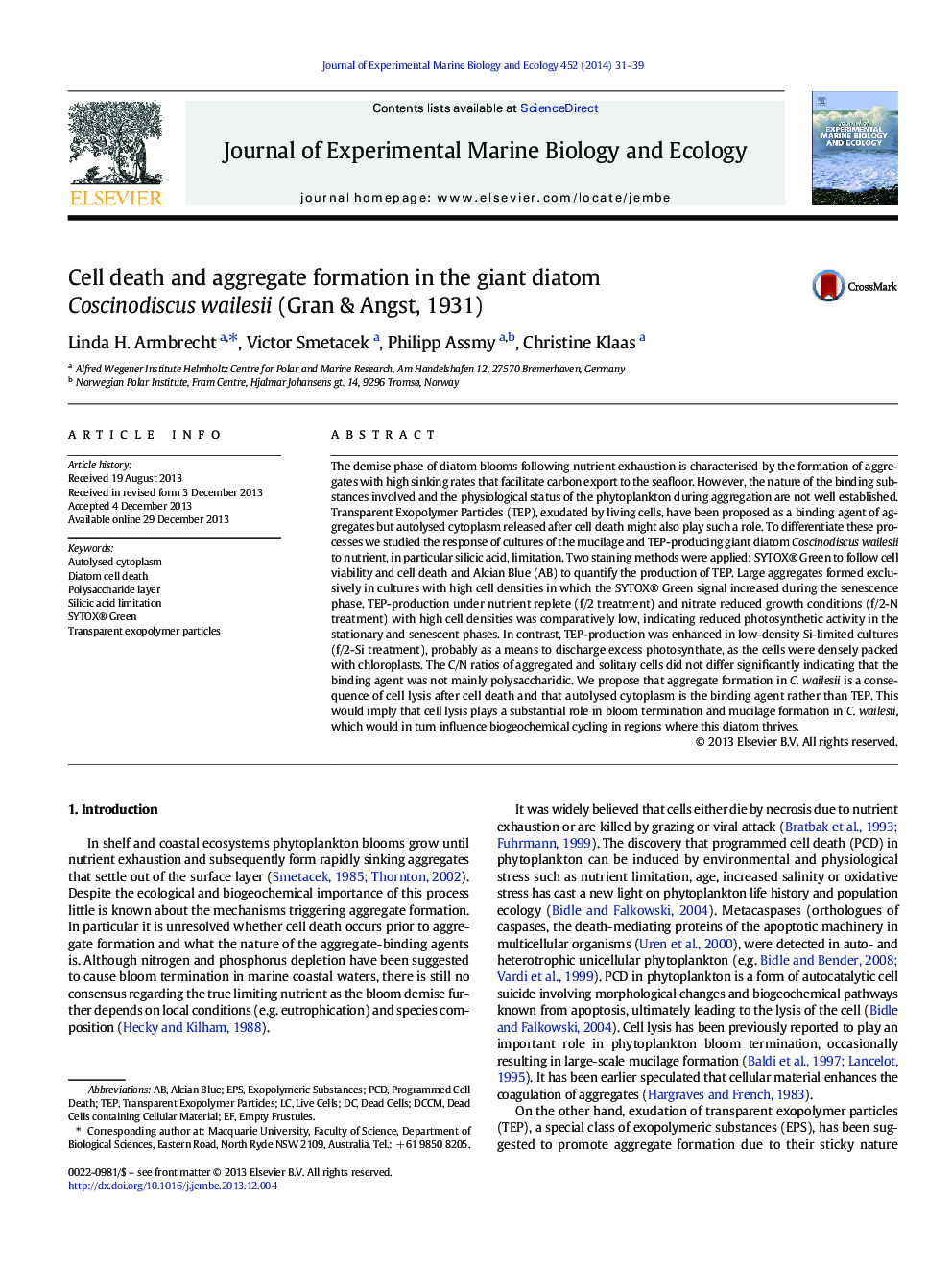| کد مقاله | کد نشریه | سال انتشار | مقاله انگلیسی | نسخه تمام متن |
|---|---|---|---|---|
| 4395551 | 1618423 | 2014 | 9 صفحه PDF | دانلود رایگان |

• Growth of the giant diatom Coscinodiscus wailesii was highly Si-dependent.
• Si:N ratios were estimated to be at least double the average diatom ratio.
• In low cell-density Si-limited cultures TEP production was high.
• Cytoplasm release in high-density cultures (cell lysis) caused aggregate formation.
The demise phase of diatom blooms following nutrient exhaustion is characterised by the formation of aggregates with high sinking rates that facilitate carbon export to the seafloor. However, the nature of the binding substances involved and the physiological status of the phytoplankton during aggregation are not well established. Transparent Exopolymer Particles (TEP), exudated by living cells, have been proposed as a binding agent of aggregates but autolysed cytoplasm released after cell death might also play such a role. To differentiate these processes we studied the response of cultures of the mucilage and TEP-producing giant diatom Coscinodiscus wailesii to nutrient, in particular silicic acid, limitation. Two staining methods were applied: SYTOX® Green to follow cell viability and cell death and Alcian Blue (AB) to quantify the production of TEP. Large aggregates formed exclusively in cultures with high cell densities in which the SYTOX® Green signal increased during the senescence phase. TEP-production under nutrient replete (f/2 treatment) and nitrate reduced growth conditions (f/2-N treatment) with high cell densities was comparatively low, indicating reduced photosynthetic activity in the stationary and senescent phases. In contrast, TEP-production was enhanced in low-density Si-limited cultures (f/2-Si treatment), probably as a means to discharge excess photosynthate, as the cells were densely packed with chloroplasts. The C/N ratios of aggregated and solitary cells did not differ significantly indicating that the binding agent was not mainly polysaccharidic. We propose that aggregate formation in C. wailesii is a consequence of cell lysis after cell death and that autolysed cytoplasm is the binding agent rather than TEP. This would imply that cell lysis plays a substantial role in bloom termination and mucilage formation in C. wailesii, which would in turn influence biogeochemical cycling in regions where this diatom thrives.
Journal: Journal of Experimental Marine Biology and Ecology - Volume 452, March 2014, Pages 31–39